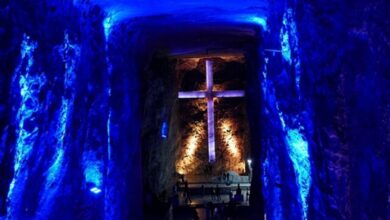New spin on chopper mystery
A ban on a model well known across Latin America has aviation experts shaking their heads.

Geoff Hill looks at a modern air mystery.
They drop water on forest fires, rescue fishermen at sea and serve in the armed forces of six Latin American nations.
Since the launch 40 years ago of the Super Puma, thousands of lives have been saved by this most iconic of the helicopters, a giant workhorse that flies from Africa to the Amazon. It is also the ride of choice for heads of state, including the King of Morocco, Emperor Akihito of Japan, Angela Merkel of Germany, plus the French defense chiefs.
And there are few places outside Europe where the Puma is so prevalent as Latin America, with a variety of models serving in Ecuador, Venezuela, Brazil, Chile and Argentina.
But in 2016, an accident saw a Super Puma H225 grounded in Britain and Norway.
From a single-seater to the largest airliner, mishaps in the sky are not taken lightly. An enquiry is standard, often coupled with a temporary grounding of the aircraft. Parts are checked, airlines or the manufacturer may be asked to make modifications, and the plane goes back in use. And, sure enough, the H225 is flying again worldwide, except for an ongoing ban by the authorities in London and Oslo.
Some suggest the continued grounding is really down to oil companies trying to ditch their contracts in the North Sea. When the price of oil was high, Pumas ferried crews to the rigs, but as crude fell – so the story runs – firms who had used them for years claimed the choppers were unsafe.
Look at any of the national carriers from Lufthansa to Latam, Emirates or Avianca, and you’ll find Airbus. Between them, the US Boeing group and Airbus based in France build more than 80 per cent of the world’s passenger planes.
For helicopters, the market is more diverse with manufacturers in Japan, Brazil, Argentina, Russia, several in the US, and Airbus out of Marseille in France.
Choppers ferry clients to a landing pad on the roof of Harrods in London, sweep the sea for lost fishing boats, and monitor illegal logging in the Amazon and are an indispensable to the tourist trade in Latin America. But when it launched in 1999, the H225 was in a class of its own: strong, fast and with a range of nearly a thousand kilometers.
Today they’re used by the military in Taiwan, Mexico and France. They serve in the Japanese coast guard and as airborne fire engines in South Korea.
The Argentine navy took delivery of its first one in 2015, with more to follow.
On the morning of 29 April 2016, a Super Puma H225 operated by the Canadian CHC group left a platform in the North Sea and made for the Norwegian town of Bergen, less than an hour away. On board were 11 oil workers and two crew.
The flight recorder would later show nothing strange about the journey. Then, as it made land at an altitude of less than 700 metres, locals say they watched the massive rotors come off and fall away.
It took just 11 seconds for the cabin to hit the ground, killing all 13 people.
It would later be alleged that, before the helicopter was assembled, a truck carrying the gearbox was involved in a road accident possibly damaging the part. Investigators found a crack or fracture, and the gearbox had split in flight, forcing the blades to come away. The mystery deepened when accident investigators in Norway couldn’t agree on what caused the break.
In line with procedure, oil companies in the UK and Norway grounded all their H225s, except those used in search and rescue.
Then, aviation authorities in Oslo and London went further, banning the H225 from their air space. Soon, most of the world fleet was under inspection.
Quintin Frost is a South African pilot who has worked on all six continents, flying helicopters in Iraq, the Swiss Alps and frequently across Central and South America.
“Lift a heavy load with any helicopter and it tips to one side, so the pilot has to compensate by adjusting the rotors,” he said. “By contrast, the Super Puma goes straight up.
“But there are other things that make this a great aircraft. It probably has the best autopilot on the market, one of the few able land by itself. And if for some reason the engine fails, you can tilt the rotors and they are wide enough to catch the wind, and the spin will allow you to float down safely.”
The industry, he says, has never been more competitive, and every maker from Bell to Sikorsky and Airbus has had their problems.
Statoil is one of the world’s most profitable companies with operations in 36 countries, a major player in Latin America.
Outside Norway, their biggest oil field is in the Campos Basin, 83 kilometers off the coast of Rio.
They also have operations in Colombia, Mexico, Nicaragua and Surinam.
Headquartered in Oslo and with assets of more than $100bn, Statoil’s single biggest shareholder (67%) is the Norwegian government.
Statoil had chartered the doomed flight on 29 April, and grounded their own fleet of H225s. But then they announced that all their Super Pumas would cease operation, opting instead for the US-made Sikorsky.
Slowly, the H225 moved back IGNORE INTO use around the world, with just Britain and Norway insisting it stay out of service.
This has raised questions within the industry, including suggestions the ban may be linked to the low oil price given so many of the H225s in Europe ferried crews to and from platforms in the North Sea. Frustratingly there’s no evidence to show why the policy continues.
Once in the sky, other helicopters can fly without human control, but the H225’s autopilot will do a vertical take-off and landing, unaided. Sensors handle approach to even the smallest platform at sea, and an extra fuel tank can be fitted in under two hours, allowing greater reach.
And it can fly the Andean snowline or along the equator.
So where does that leave an aircraft that’s still active in Latin America and the world, and banned in just two countries?
Quintin Frost says there’s been an unforeseen boost in second-hand sales.
“The grounding saw these helicopters being sold across Europe at way below value. This has spread them around the world. Pilots love them, they’re low on fuel and there are growing numbers in North and South America.”
Theories on why this one crash and the tragic loss of 13 people led to such a massive reaction continue to be debated: competing firms in the shadows, a falling oil price, the chance to wiggle out of contracts.
Those imposing the ban cite health and safety while supporters -including many pilots and technicians – say one of the best aircraft ever built has been maligned.
At the Airbus plant in Marseilles, the H225 remains in production.
In four decades, choppers have flown more than 65 million passengers have to and from the North Sea oil rigs.
These are some of the world’s most treacherous seas, and the oil fields support some 300 000 British jobs.
Super Pumas remain a regular sight across Latin America, both in military use and for rescue.
A year after the accident, it’s time for Britain and Norway to lift ban on the H225 or explain the mystery of why they are still trying to keep it out of the sky.
LatinAmerican Post | Geoff Hill
Copy edited by Susana Cicchetto





